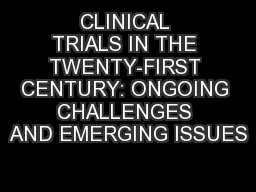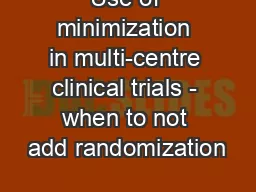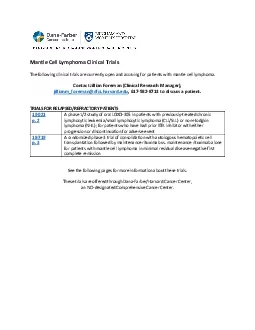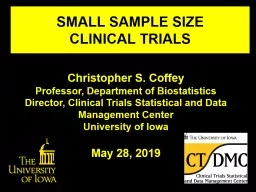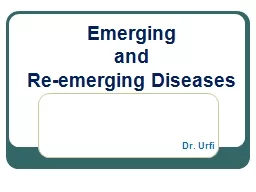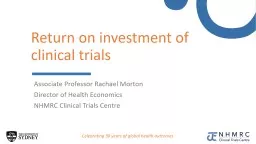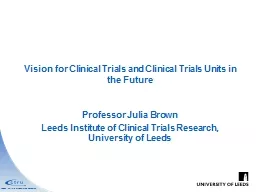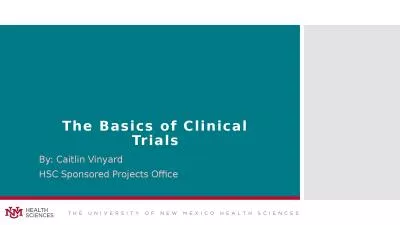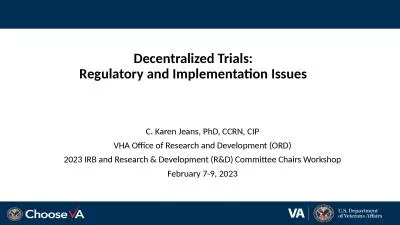PPT-CLINICAL TRIALS IN THE TWENTY-FIRST CENTURY: ONGOING CHALLENGES AND EMERGING ISSUES
Author : yoshiko-marsland | Published Date : 2019-12-10
CLINICAL TRIALS IN THE TWENTYFIRST CENTURY ONGOING CHALLENGES AND EMERGING ISSUES Susan S Ellenberg PhD University of Pennsylvania SCTICTMC Joint Meeting Liverpool
Presentation Embed Code
Download Presentation
Download Presentation The PPT/PDF document "CLINICAL TRIALS IN THE TWENTY-FIRST CENT..." is the property of its rightful owner. Permission is granted to download and print the materials on this website for personal, non-commercial use only, and to display it on your personal computer provided you do not modify the materials and that you retain all copyright notices contained in the materials. By downloading content from our website, you accept the terms of this agreement.
CLINICAL TRIALS IN THE TWENTY-FIRST CENTURY: ONGOING CHALLENGES AND EMERGING ISSUES: Transcript
Download Rules Of Document
"CLINICAL TRIALS IN THE TWENTY-FIRST CENTURY: ONGOING CHALLENGES AND EMERGING ISSUES"The content belongs to its owner. You may download and print it for personal use, without modification, and keep all copyright notices. By downloading, you agree to these terms.
Related Documents



